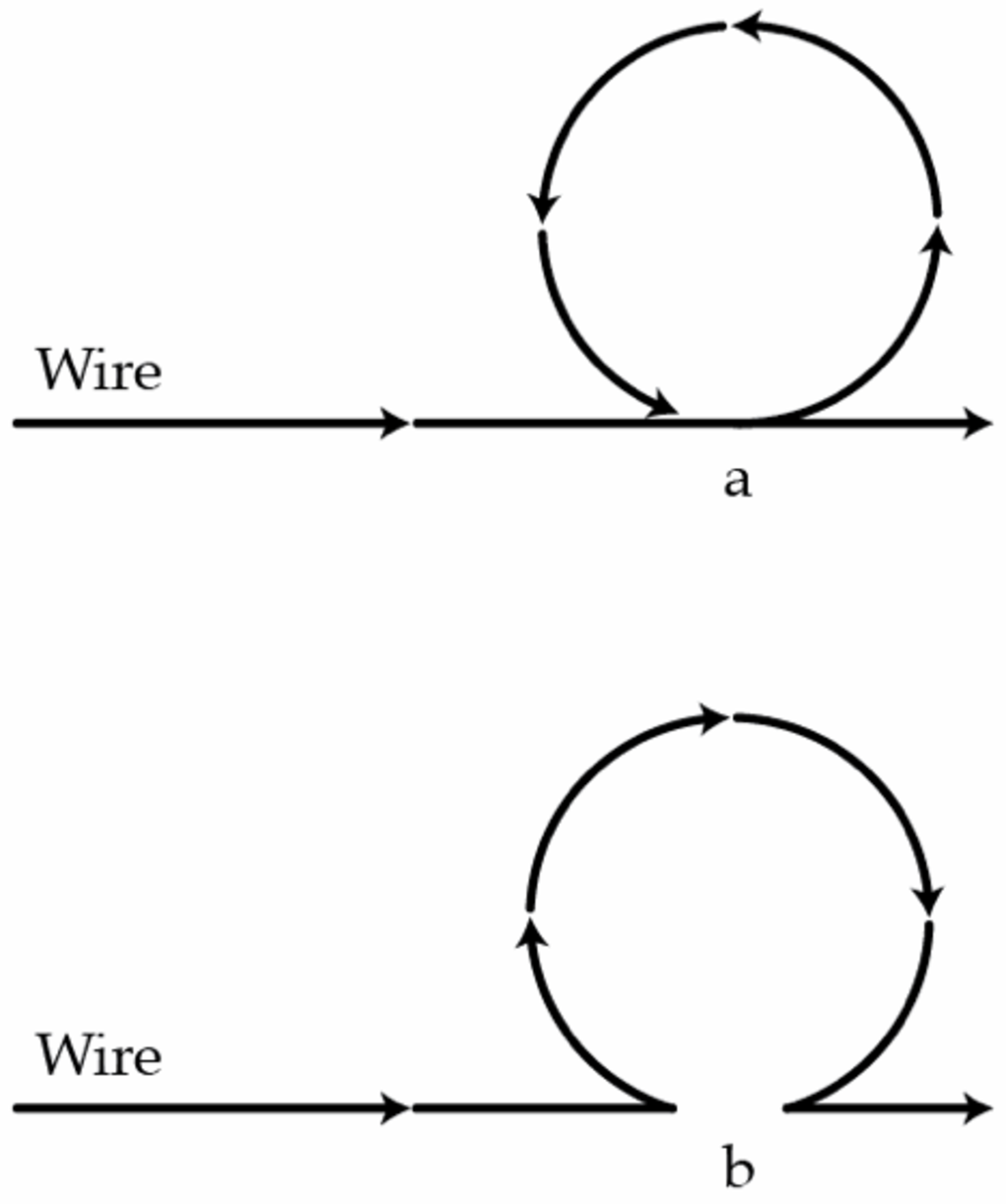Wiring for a trolley
A worker that maintains trolleys has to twist one part of the wiring in order to tighten up the wires. He knows that a direct current that goes through wires induces magnetic field and he wants to minimize the magnetic field in the loop to avoid any side effects.
The worker can twist the wire in two ways shown in the picture bellow. If the radius of the loop is , and the magnetic field strength at a distance from a straight wire was , what is the difference between the magnetic field strength in the middle of the loop in the case a) and b) in A/m ?

Details and assumptions
- Your answer should be the absolute value of the difference between the fields.
The answer is 62.83.
This section requires Javascript.
You are seeing this because something didn't load right. We suggest you, (a) try
refreshing the page, (b) enabling javascript if it is disabled on your browser and,
finally, (c)
loading the
non-javascript version of this page
. We're sorry about the hassle.
Let's define the out of the page direction of the magnetic field as positive direction. Then, the straight wire in both cases will produce a positive magnetic field. The loop in case A will produce a positive field while the loop in case B produce a negative field.
Since the magnetic field produced by the wire is 1 0 = 2 π r μ 0 I , the magnitude of the magnetic field produced by the loop is 1 0 π = 2 r μ 0 I .
Then the difference between case A and B is ( + 1 0 + 1 0 π ) − ( 1 0 − 1 0 π ) = 2 0 π = 6 2 . 8 3